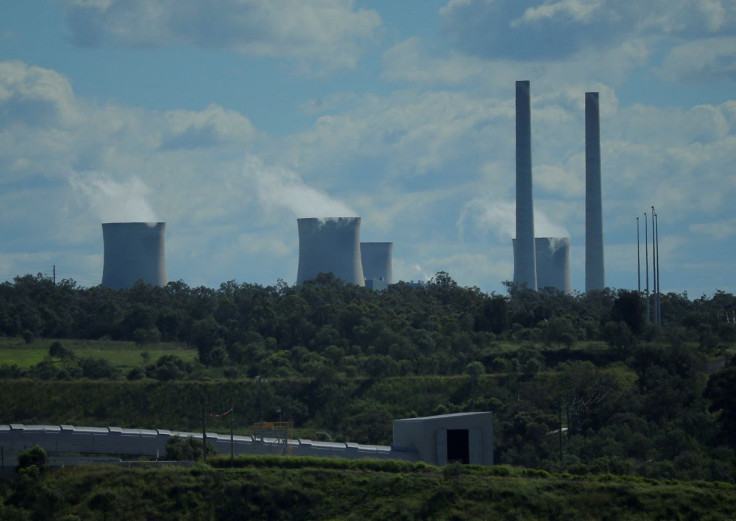Column-Australia's Power Crisis Will Lead To More Solar And Regulation: Russell

It defies logic that one of the world's biggest exporters of liquefied natural gas (LNG) and coal is struggling to ensure enough domestic supplies to keep the lights on, but that is Australia's current reality.
Widespread power blackouts have so far been avoided in the country's National Electricity Market (NEM), which includes the heavily-populated eastern states, but not the more remote Western Australia state and the Northern Territory.
But this is more likely a matter of some luck as the generation and grid systems are strained by a lack of supply amid outages at coal-fired power plants, high spot prices for natural gas, seasonally lower solar generation and a cold start to winter.
As is often the case, the situation is far more complex than the various politicians, industry lobby groups and commentators would have you believe.
There are several levels of failure at work, chief among them the lack of a coordinated national energy policy between the federal and state governments, resulting in a lack of investment in the electricity sector.
Much of the blame can be laid at the door of the conservative Liberal-National coalition government, which held power at a federal level for nine years until being ousted by the centre-left Labor Party in last month's general election.
The former government was widely viewed as being in the pocket of the fossil fuel lobby, even going so far as to tout what it called a gas-led recovery from the COVID-19 pandemic, which resulted only in the approval to build a gas-fired power station in New South Wales state that energy analysts said was not needed and would be economically uncompetitive to run.
It's worth looking at what is not going to happen, what's likely to happen and what should happen if Australia is to meet the twin goals of reliable and affordable electricity, as well as decarbonising the current coal-dominant generation system.
What won't happen is that Australia will build new coal-fired or nuclear power plants.
Considerable media attention has been devoted to this idea, but these are irrelevant talking points by conservative politicians, who did little to advance this agenda during their nine years in power.
What will happen is that Australians will vote with their wallets and install even more household solar and batteries in an effort to cut energy bills, which have risen by more than 20% for customers in some areas of the NEM this year.
While this will help ease the pressure on household costs, it does add to the problems of grid management, as solar without battery storage means excess generation in the middle of the day and insufficient electricity at night, or in periods of extended cloudy weather, as sometimes can happen in winter.
This is where the new government can act by directly subsidising household batteries, or working with the state governments to ensure sufficient incentives for consumers to add storage to their solar systems.
The federal and state governments can also act to boost incentives for utilities to install grid-scale batteries and build more wind farms to provide generation when solar output is weak.
REGULATION COMING?
What is also likely to happen is increased regulation in some form or another, given widespread public anger that the country that vies with the United States and Qatar as the world's biggest LNG exporter, and with Indonesia as the top coal shipper, can't secure enough supplies at a reasonable cost for domestic use.
Part of the problem last week when the Australian Energy Market Operator was forced to suspend the spot electricity market was that natural gas peaking generators couldn't make enough money because of the high spot price of gas.
The natural gas lobby argues that there is sufficient supply available to the domestic market, and that most customers are on fixed-price contracts.
That may be true, but the gas lobby doesn't like to talk about the high price of spot supplies needed when coal-fired generators go offline, as is currently the case.
The industry's solution is for natural gas storage to be built, which would be able to release supplies in times of stress.
This may work, but conveniently places the cost and operation of the storage onto somebody else, most likely either the market operator or the power utilities, who will just pass the cost along in the form of higher bills for consumers.
What is also possible is that the federal government legislates to force gas companies to guarantee supply at a price that isn't linked to the spot price of LNG in Asia, as this is too volatile and too high, and likely to remain that way given Europe's demand for gas as it tries to wean itself off Russian supplies.
Australia's current problems require both short- and longer-term solutions.
The short term calls for intervention to ensure sufficient natural gas is made available at a price low enough to ensure that peaking gas plant operators can at least cover costs if they are to generate electricity.
The longer term calls for policies to ensure that solar, wind and storage investments are aligned and effectively integrated into the grid, while ensuring that gas-fired peaking plants have sufficient incentive to remain in the market as ageing coal-fired plants gradually exit the system.
(Editing by Christian Schmollinger)
© Copyright Thomson Reuters 2024. All rights reserved.




















